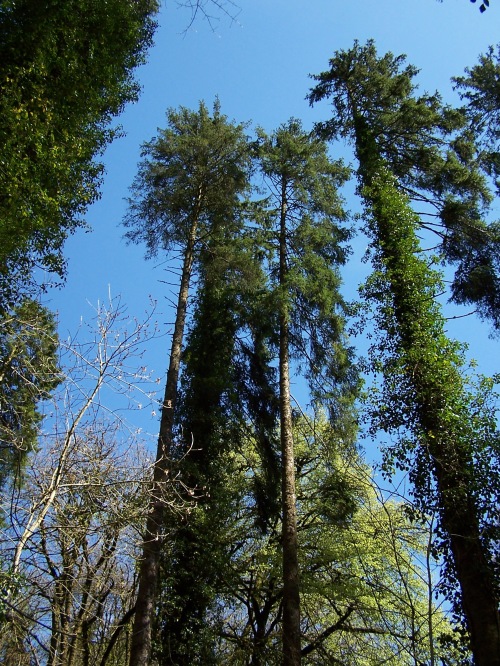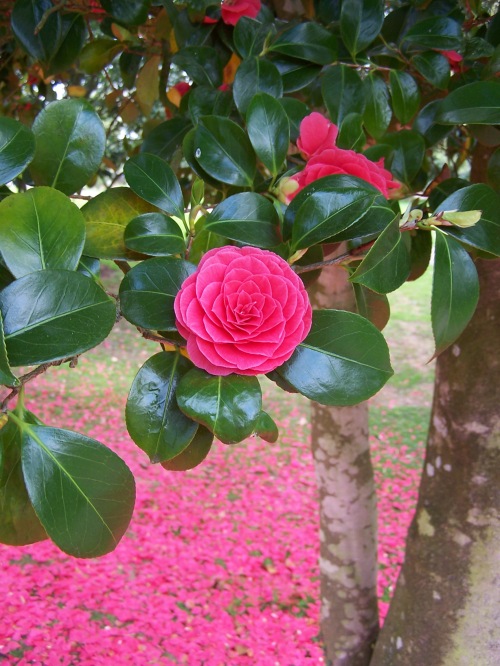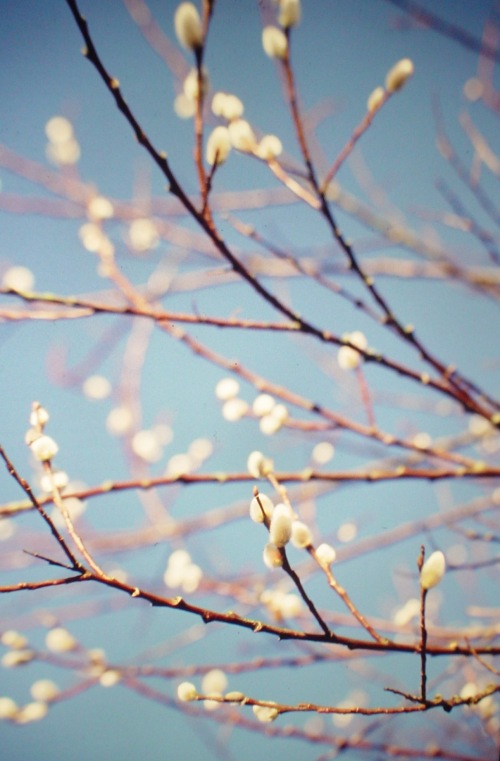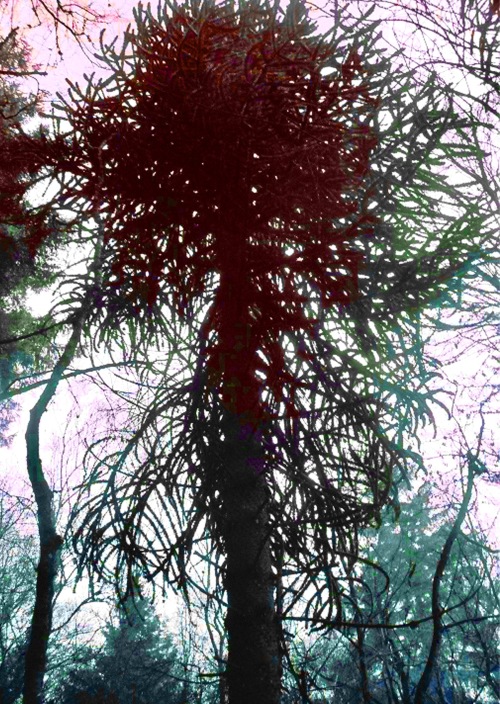TREE:TRUTH

blackthorn blossom, now starting to show here in Devon, though it will not be out fully for a while yet – the cherry plum will blossom first.
(The Old English word for “tree” is the same word they used for “truth”).
Moving into trees…
After the first idea to create a range of tree flower essences I looked to see if there was a natural grouping or selection that would provide the basis for a coherent collection of essences. The first, and most obvious choice was to create a range of the trees familiar to the Celtic peoples and popularised in various oghams and tree calendars from the 1970’s onwards. These tree-based systems are still very popular today for they carry the authenticity of the ancient past with their certainty of repetition. However, there were significant problems and discrepancies in the system. At a purely practical level not all the ‘trees’ in the system are trees at all. In the modern ogham we find reed, vine, ivy, broom, gorse, heather. Despite the certainty of modern lists, they are largely derivative of the works of Robert Graves. This Classical scholar wrote the influential book “The White Goddess”, within which he linked some Welsh and Irish texts to a Celtic lunar calendar of his own invention. As a poet he had every right to investigate, manipulate and create – but his grandfather, who was a renowned Celtic scholar, could not approve of the liberties his grandson was taking. Other Irish scholars, such as Peter Berresford Ellis, attempt ( against the flood ), to realign the truth of the source materials.
So firstly, I would like to examine the situation, as I see it. That the Celtic peoples of Europe, the heirs to the Neolithic and Bronze Age peoples, venerated the symbol of the tree is evident, both from art and archaeology. In the Middle East and in the early civilisations of Mesopotamia the tree is a central image that in hot climates clearly comes to indicate stability, fertility, abundance and the immanent creator deities. In the more temperate, forested lands of the West trees take up a similar role and become associated with the sacred centre of the land (as its protector and nurturer) and, by association, to the people of the land themselves. Trees are the pillars of divine order, and a means to access divine will throughout these early cultures.
Our association of trees with druids mainly derives from Classical commentators whose details may be exaggerated, salacious or ‘ improved’ for a city-dwelling audience. The evidence that late indigenous Celts/Britons continued to revere trees is, however, found throughout the petulant complaints of medieval churchmen who strove to destroy sacred trees and groves wherever they could be found. The later transmutation of the cavern-like Romanesque cathedrals of Western Europe into the soaring forests of the High Gothic suggest that the artistic and metaphysical attachment to sacred trees was easier to transform than eradicate from the spirit.
The Celtic intelligensia were not, as commonly supposed, illiterate. They were familiar with Greek and used the Greek alphabet. What they did not do was commit important information to writing, preferring the oral transmission and the power of memory over the vicissitudes of parchment. Only in the Later Medieval period, under cultural threat from Norman imperialism, did the scholars of Wales and Ireland begin to write things down, and then only sparsely. Treatises on metaphysics and supposed ancient wisdom often dates from the 15th to 17th centuries – understandably casting some doubt on the authenticity and reliability of these sources.
The ogham (“o’am”) alphabet popularised by Graves, seems to be peculiarly Irish. It can be found in Ireland and the facing coasts of West Wales and western Scotland – those shores culturally close to the remaining Celtic cultures of tribal Ireland. Mainly found on memorial stones, it is difficult to date, but seems to be from the Early medieval period around the 5th century AD. In physical form ogham takes the form of combinations of lines arranged along or across an axis, often the corner of a stone block. Each grouping represents a sound. Robert Graves emphasised the correspondence of each letter with a tree, but this is his own focus on one small part of a complex mnemonic and symbolic system. Each ogham was associated with a whole web of correspondences from birds to colours to plants to poetic meters to trees to directions and so on. It exhibits a truly Celtic love of ingenuity in language, a multiple layering of meaning and metaphor that really aggravated the pragmatic rhetoric of the Roman Senate. So although trees were one aspect of the ogham it was not necessarily the primary system. Even the names given to the ogham letters are often clearly not the ancient names of trees, though they may reflect some of the metaphysical attributes of a certain tree, but this is not the same as saying ” this ogham letter represents this tree”, as modern commentators would often have us believe.
From my point of view an even greater difficulty was the internal contradictions and ambiguity, and the great variability of what tree represented what sound. Modern sources have tended to follow Graves and plump for a single, definitive tree ogham. This certainly is absent in the oldest known sources. And these sources themselves present anomalies that require careful consideration. For example, if these ogham tree lists are a truly ancient system of symbolic knowledge then they should only have trees listed that were indiginous to the Iron Age and Early Medieval periods. This is an important point. In the British Isles the native species of trees is around 39. What is counted as ‘native’ are those trees that repopulated the lands of Britain as the icecaps retreated about 11,000 years ago, and before the land bridge to Europe submerged preventing any further natural spread of species. The expansion followed the warming climate from south-east to north-west, primarily along river valleys and finally into the highlands. The last trees to slip past the barrier before rising sea levels finally shut the borders were hornbeam and beech, which gained a late foothold in Kent and the far south-east. One hopeful maple, (now confusingly called ‘Norway maple’ ) had the door slammed in its face and only made it as far as the Channel coast under its own steam. Of these 39 species a great many are varieties of willow! All other trees that we assume are natural to the landscape were either introduced later by human beings or had very limited native habitats. Thus to find ‘fir’ in an ogham list must be a later addition because fir trees, though native to the forests of Europe, were not native in these islands ( except before the Ice Ages). Scots pine may have had a natural spread through Britain at some periods, but in recorded times it seems to have really only been native to the Highlands of Scotland, being reintroduced back into England in the 16th and 17th Centuries.
There are some notable omissions from the Irish tree lists that may suggest an Irish-only origin for ogham. In mainland Britain, the forests were dominated by three species: oak, ash and lime. Lime never colonised Ireland and is also absent from the ogham lists. Lime is one of the most useful of trees, both medically and for making things. Its absence makes no sense in a pan-Celtic system. There are many other native trees of similar importance that are notable by their absence from the lists. I was going to list them down here, but of course, became bogged down with which lists to use, which variations, and so on. In other words, I came up against the brick walls that had originally decided me on a different approach!
I believed that to be relevant today, it was important to look beyond. The limitations of the ogham tradition, and its ancient authority, creates both advantages and disadvantages. One inherent disadvantage with “ancient knowledge” is that, unless the key to understanding the core of the system is maintained – which allows updating and flexibility – the information becomes fixed and dogmatic. The advantage with a rigid structure it that it breeds confidence. The purpose of every tradition is to maintain and pass on true and effective methods. The limited number of trees apparently included in ogham means that it is easier to focus on each one. Confusion is reduced, simplicity encouraged. However, with a finite, closed system ( especially dealing with arcane or esoteric knowledge), the inherent danger is always exclusivity and elitism. It encourages the concept that some trees are more important, more spiritual, more healing, more traditional, more ancient than others. The more limited a system, the more this tendency is likely to manifest ( the intolerance of monotheists in comparison to polytheists, for example). We generally strive to achieve the security of precedence. The longer something has been in existence the more genuine we feel that it is. This is an emotional reaction and defies all logic. As social animals we feel more secure following the crowd or adhering to an elite group ( a ‘special’ crowd).
So when I finally discarded the practicality of the ” druid trees”, I looked to the next group: native trees. Native trees are defined in Britain as those that reinhabited the land as the icecaps retreated. There are about 40…..
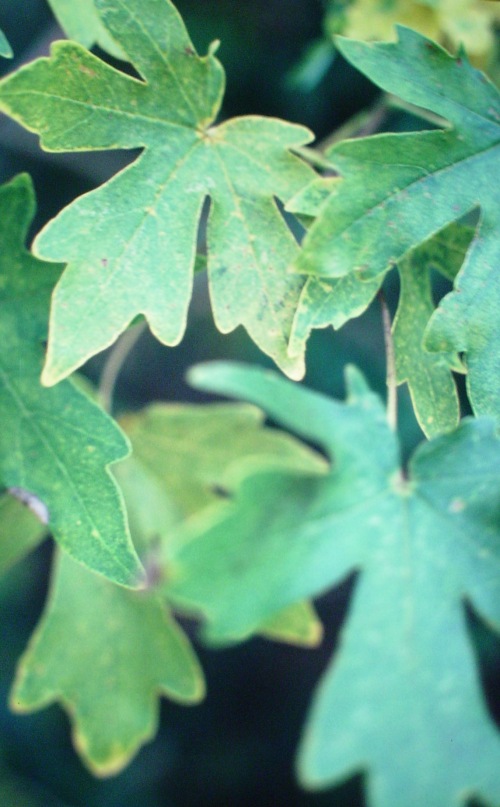
field maple, a common woodland and hedgerow tree, the only native species of maple in Britain, absent from all ogham lists.
Read Full Post »

